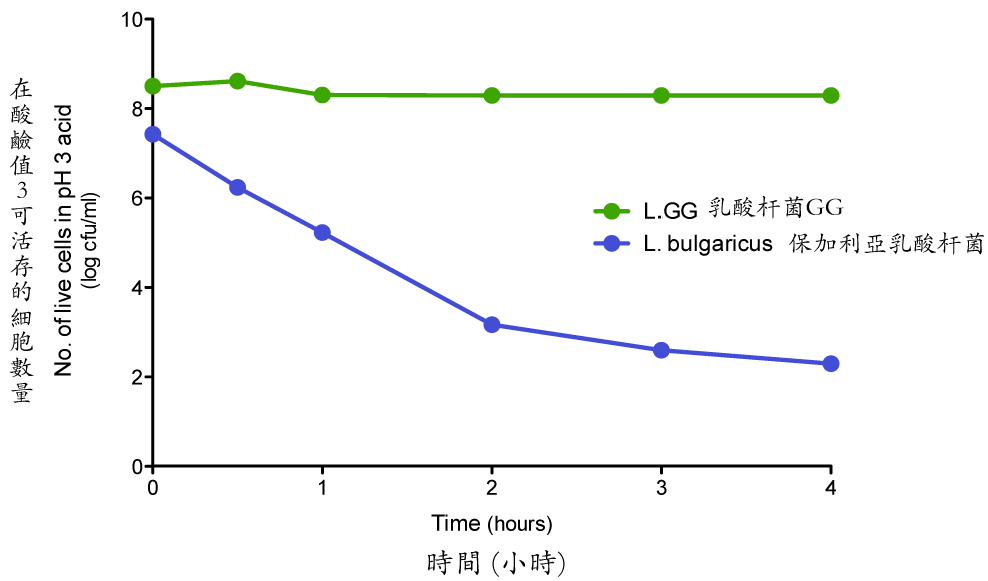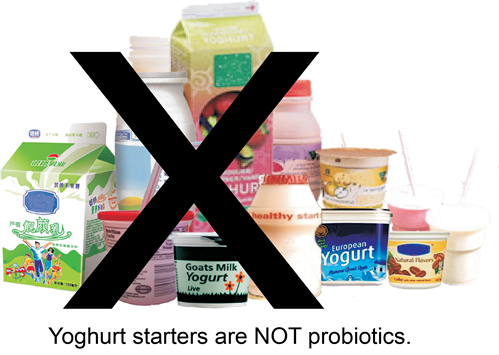Without colonisation there is no possible health benefit. Colonisation depends on the bacteria’s ability to survive and stick onto the intestinal surface.
Once consumed, a probiotic has to survive stomach acid and intestinal bile in order for it to remain alive to colonise the intestines.
The GG bacteria survive stomach acid and bile.
Scientific tests have shown that after LACTOGG® is consumed by humans, the bacteria are able to exist alive in the stools and on the surface of the intestines, proving that LactoGG can survive the human gastrointestinal tract, colonise it and live to be excreted in the stools.
In contrast, yoghurt starters such as Lactobacillus bulgaricus cannot survive stomach acid.
Survival of Lactobacillus GG (LGG) compared to yoghurt
starter, L. bulgaricus in stomach acid. [Goldin et al. 1992]
Since yoghurt starters cannot survive to colonise the intestinal tract, yoghurt starters are NOT probiotics.
Once it passes the small intestines, the GG probiotic’s ability to tolerate low levels of oxygen ensures that it can survive in the first part of the large intestine (called the caecum) which contains oxygen.
The caecum is the segment of the intestinal tract where the important, health-promoting process of fermentation of indigestible plant material and fibre is most active. Here, GG probiotic participates in this fermentation process to produce beneficial by-products called short chain fatty acids (SCFAs).
SCFAs are “food” for intestinal cells, providing nutrition for their growth and repair. They also play a part in the body’s control of insulin, blood sugar and cholesterol.
Does LACTOGG® pass this test?
Yes. LACTOGG® survives stomach acid and intestinal bile to remain ALIVE after it is consumed.
References:
Goldin BR et al. Survival of Lactobacillus species (strain GG) in human gastrointestinal tract. Dig Dis Sci 1992;37:121-128


